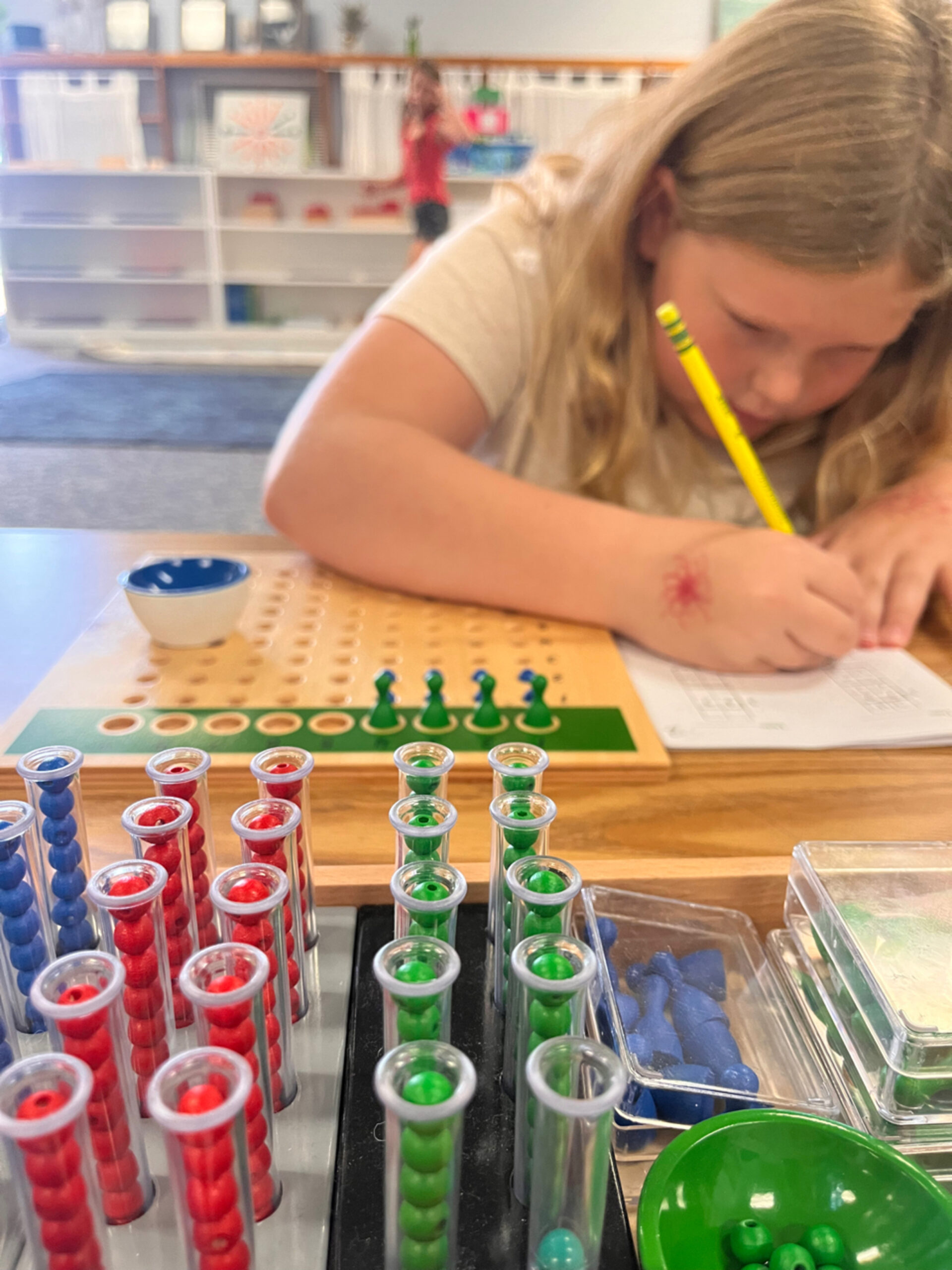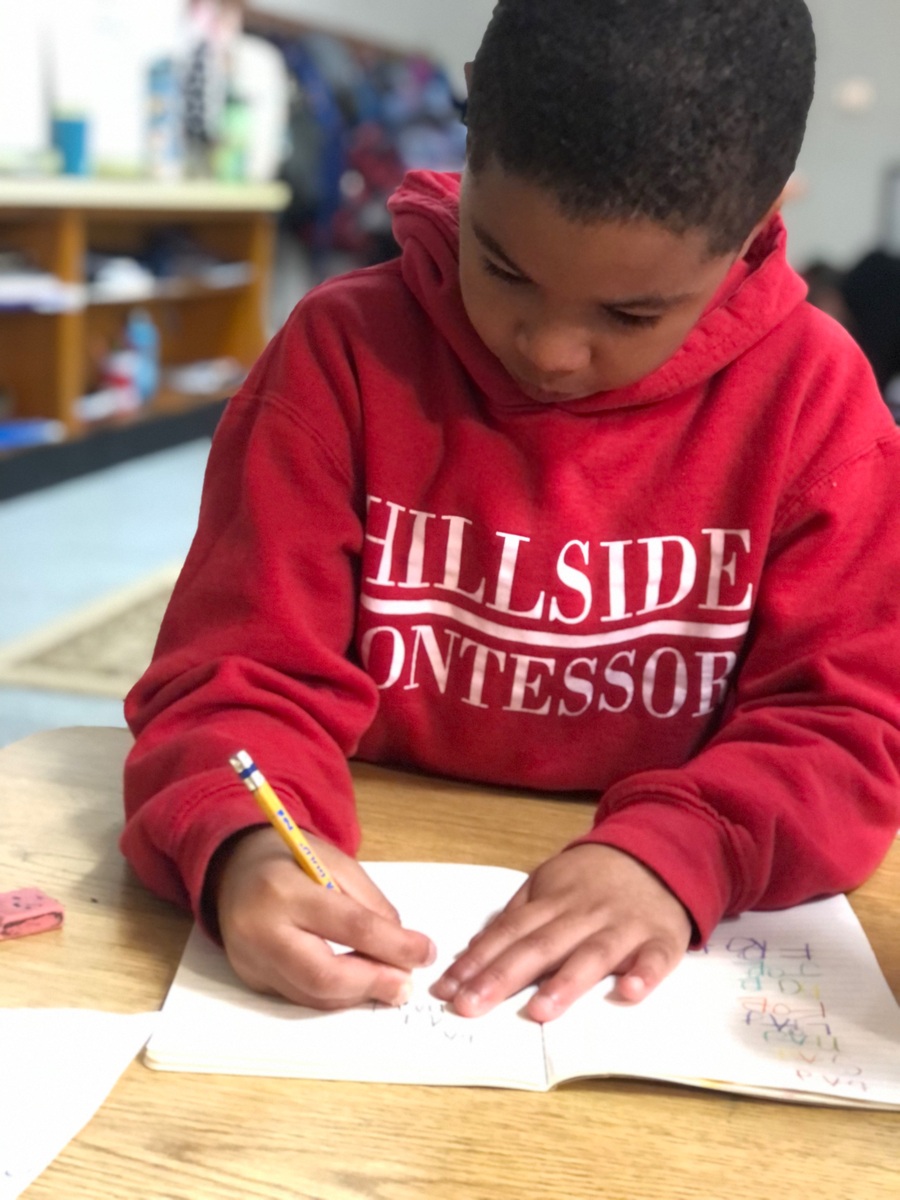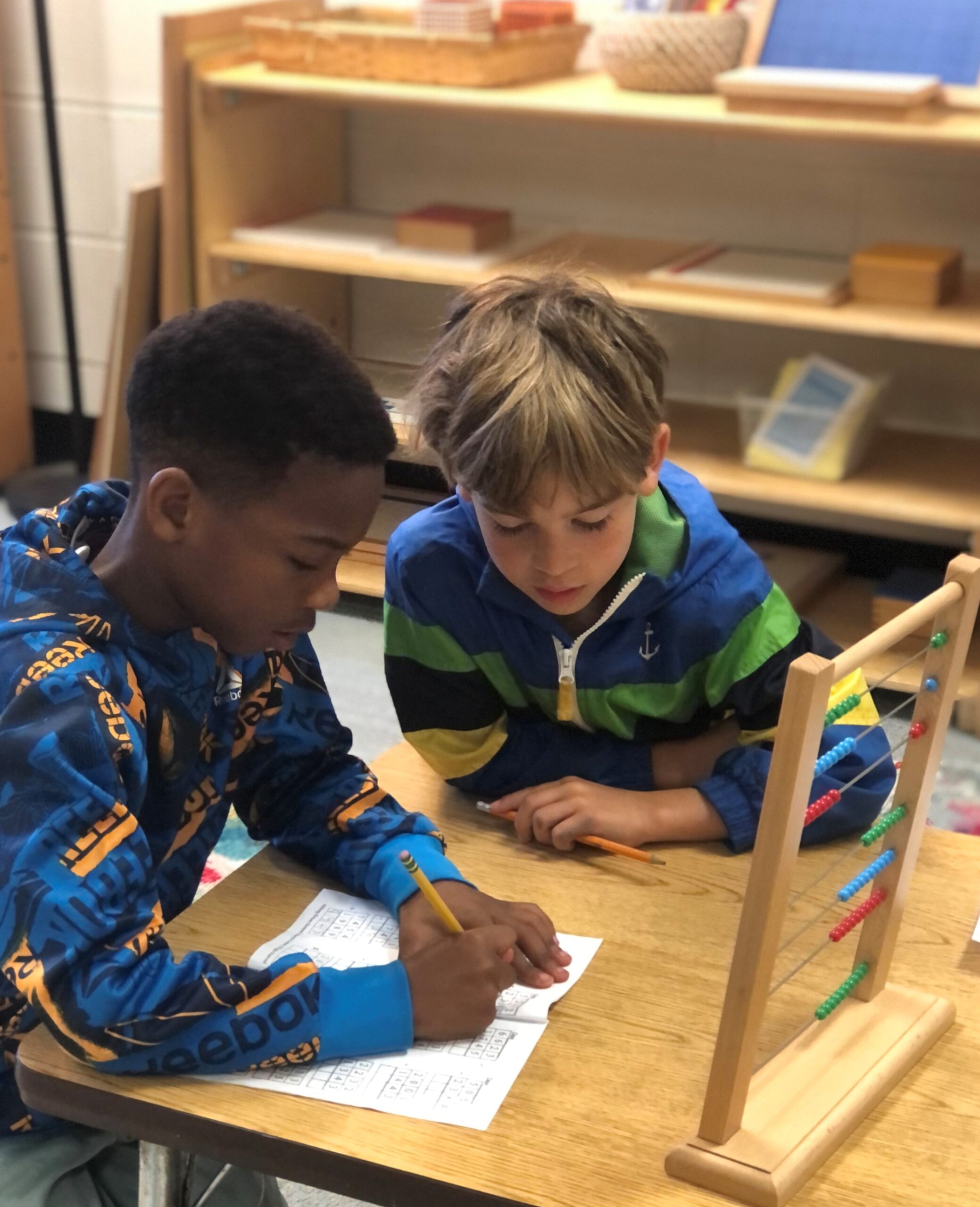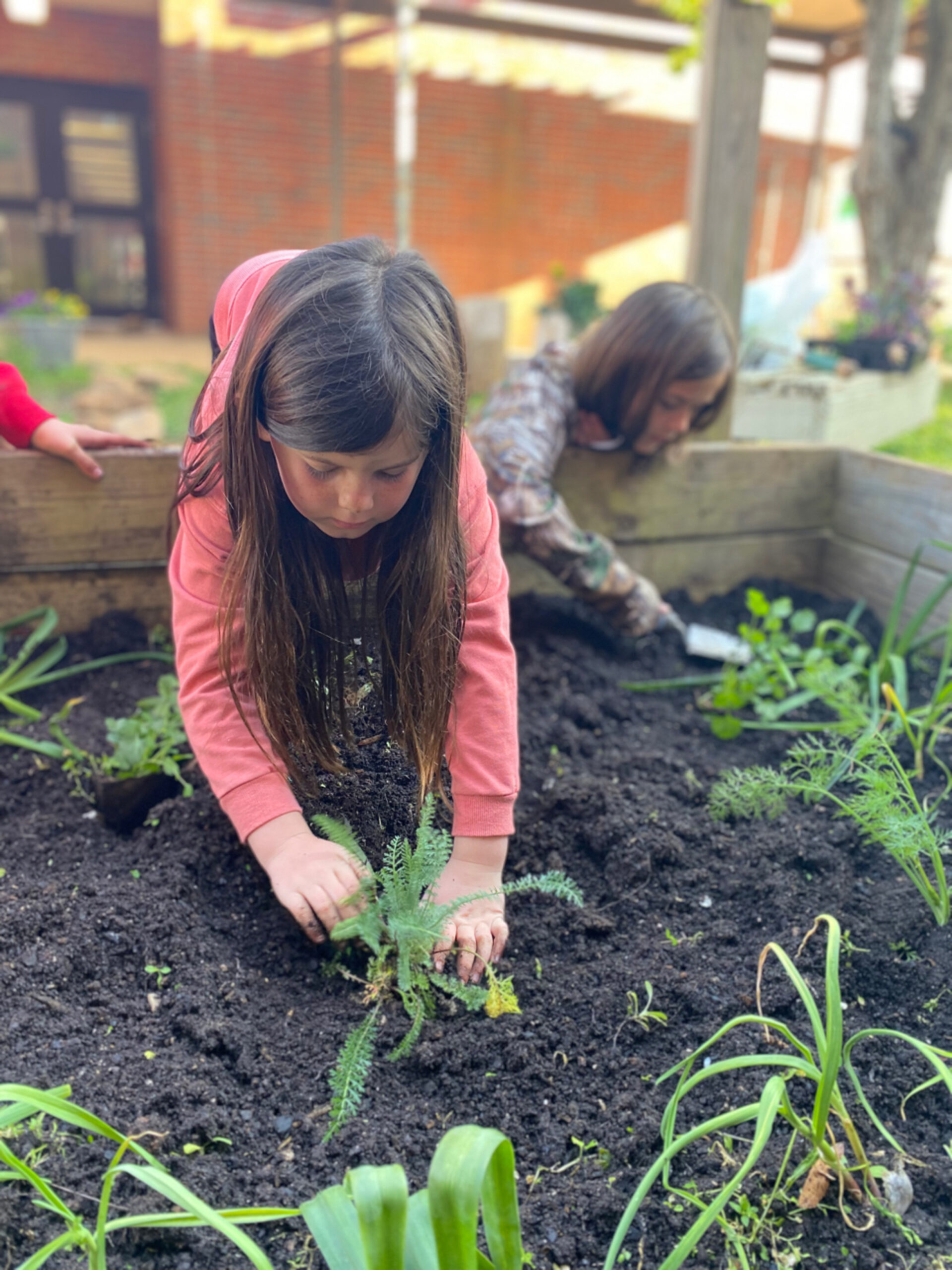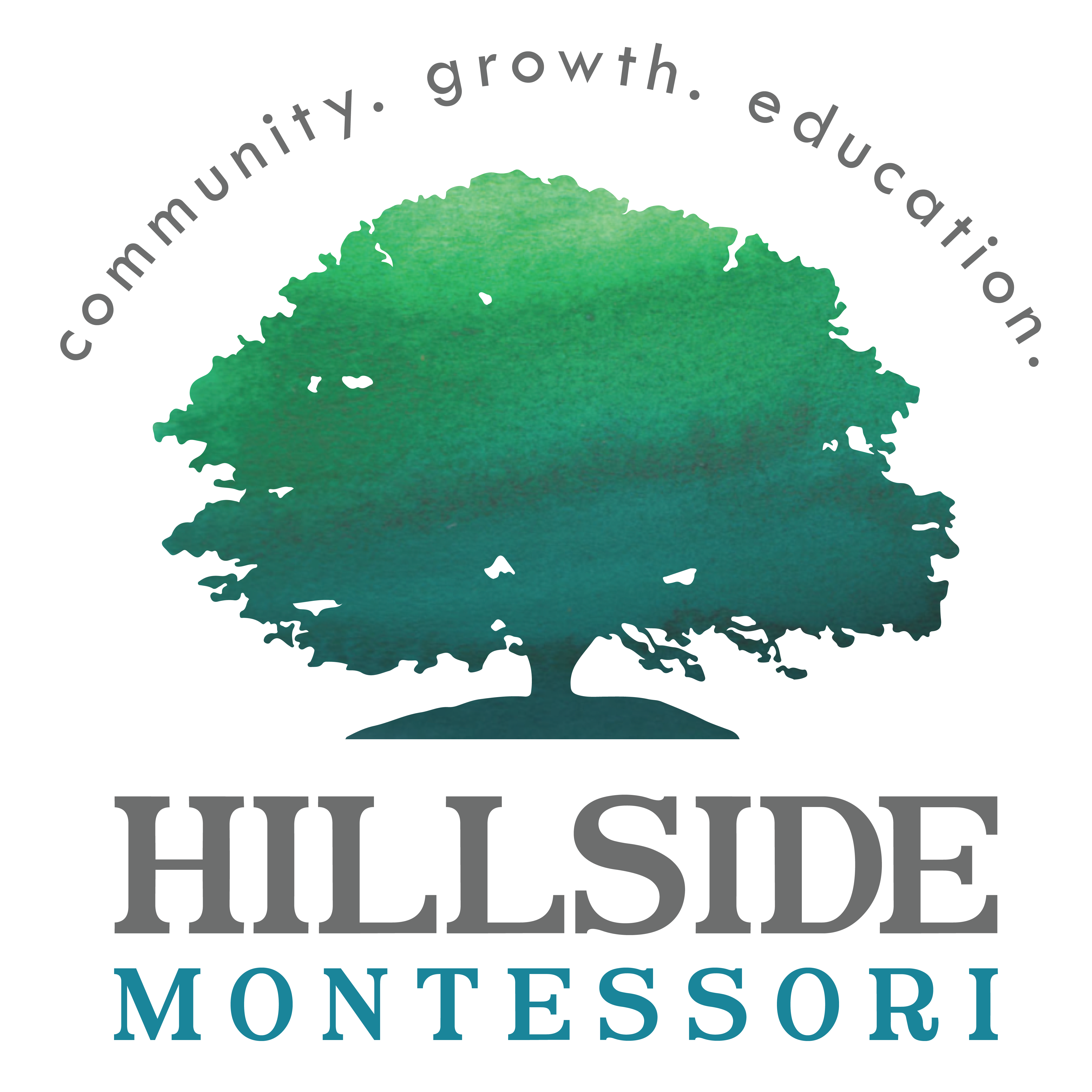The Lower Elementary Classroom
The physical classroom appears to be very similar to the Primary room. The learning materials are organized neatly by subject area, and all of the furniture is built to the size of the elementary student. As opposed to having a practical life area of the room, this part of the curriculum is now realized through real work and care of the environment. Students learn to be responsible for their classroom by sweeping, dusting, organizing, composting, and caring for plants and animals.
How? & Why?
Elementary children, in their 2nd plane of development, have moved beyond their initial questions of “What?” and “Who?” to a desire to know “How?” and “Why?”
They are now capable of developing an understanding of abstract ideas, as their imaginations push them to inquire more deeply about the world around them.
During this stage of development, children become social creatures, and the mixed-age, student-lead classroom allows them to embrace this sensitive period for socialization.
Ages 6-9
Lower Elementary Characteristics
Students at this age are seeing beyond themselves and their immediate surroundings, therefore their learning experiences take them outside of the classroom. They garden, visit the local library, plan field trips to museums, and host guest speakers and demonstrators. Their interests and research often leads them to explore local farms, natural habitats, and art exhibits and attend plays, concerts, and cultural events.
The Curriculum
Mathematics
In Mathematics, students focus on basic operations, the decimal system, and beginning geometry through the use of hands-on manipulative materials. Basic concepts of algebra, such as squaring and cubing, are also introduced. Exploration of math skills through the Montessori materials forms the foundation for a smooth transition from concrete to abstract understanding.
Sciences & Cultural Studies
The Five Great Lessons serve as the foundation for Sciences and Cultural Studies in the Elementary classroom. Initial impressionistic lessons on the history of the Universe, ignite students’ curiosity as they eagerly embark on studies in Botany, Zoology, Physical and Cultural Geography, and History. Through this integrated approach to academics, students realize and appreciate the interconnectedness of the subjects they are learning.
Language Arts
The Language Arts curriculum emphasizes writing, grammar, and sentence analysis. Reading skills are continually enhanced through individual and whole group reading, poetry analysis, and literature circles. The students write stories and produce research papers.


